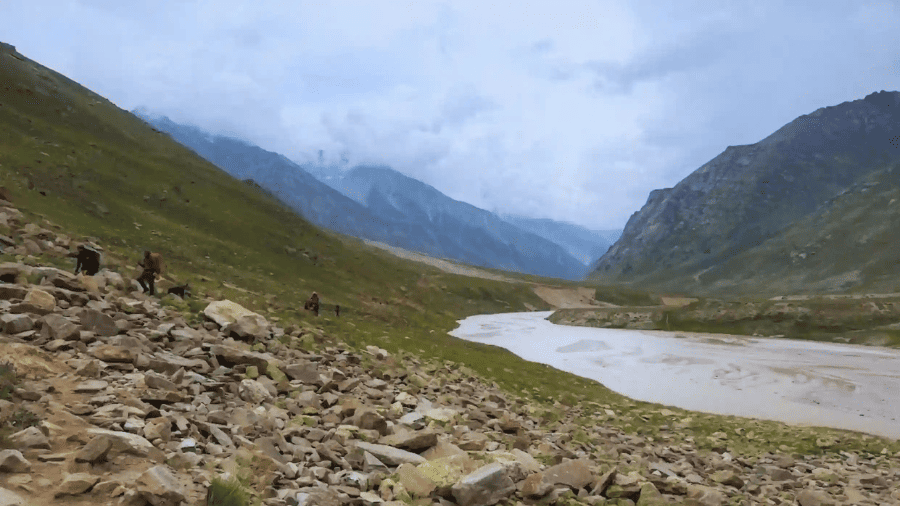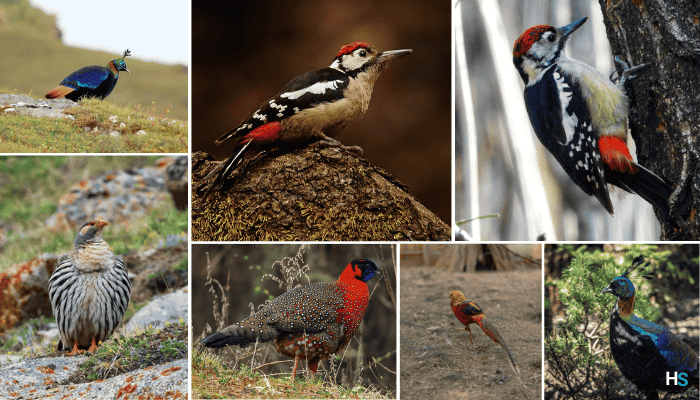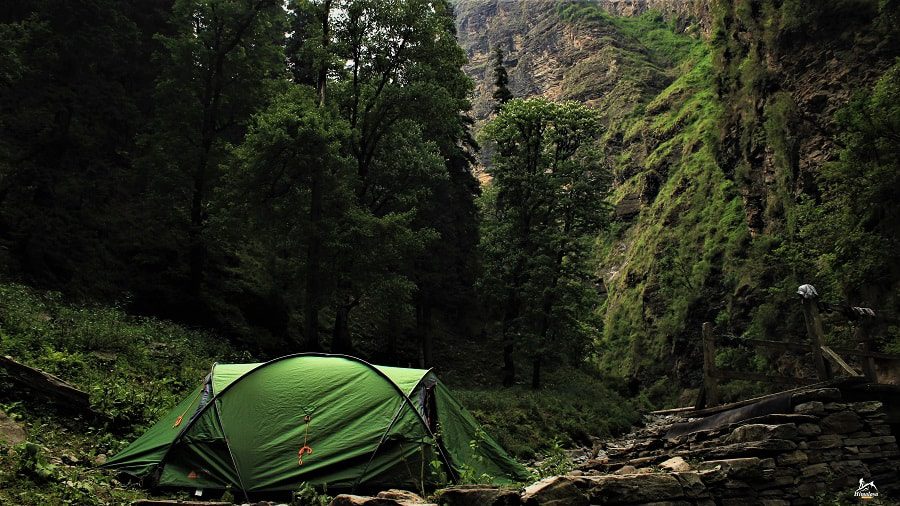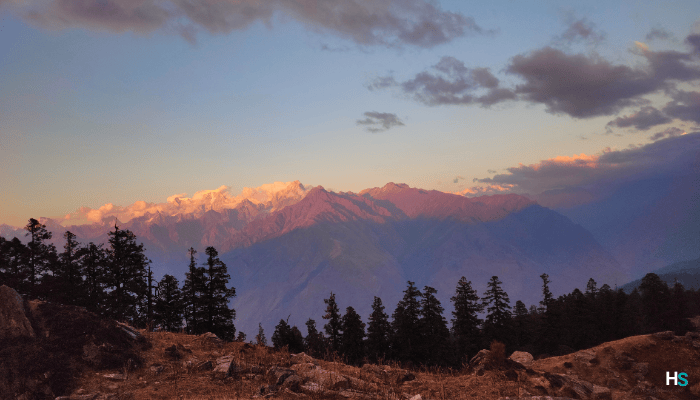
Lakes of Uttarakhand :
A Mountain lake or Tarn is a prominent feature of the mountain landscape that attracts a visitors attention, it captures the vision, and captivates with its sheer magnificence.
How is a Mountain Lake Formed?
There are several ways that these marvels come into existence. High on the mountain sides, glaciers carve out smooth bowls called cirques. Later, as the ice melts, many of these bowls fill with meltwater to become the alpine tarns, or cirque lakes that form the focus of many of our trekking trails (Roopkund).
In other cases, glaciers flowed down the valleys, and left behind large piles of debris (Ruinsara Lake). These piles became natural dams restricting water flow in their valleys. And on other occasions landslides have blocked the course of the river to create a natural reservoir. (Marinda Tal)
As all things are temporary, so are the mountain lakes!
Regardless of the mechanism of their formation, the fate of all these lakes is the same – obliteration. Many were formed of glaciers, and these same glaciers will eventually fill them in.
Weathering and Erosion will break the boulders into fine stones and finally rock flour, which heads directly into our many mountain lakes. As the speed of rivers drops rapidly once the river enters a lake, the river’s sediments are quickly deposited at the entrance to the lake. Soon deltas begin to form, and the process of in-filling begins. Eventually, all that will remain will be a braided stream flowing across the flat delta left behind by the deposition of incalculable amounts of sediment. This can be explained by the two deltas that form on the trekking route of Borasu Pass, one ahead of Ratta Tho and the other at Sawan Bhera, which perhaps were Tarns, once upon a time.
In worst case scenarios these lakes may burst open due to sudden swell in water during peak monsoon rains and the natural dam may not be able to hold off the immense pressure. This sudden burst can cause a flash flood, as it happened in the case of Chorabari Lake (Gandhi Sarovar) which disappeared after it burst and is considered as the primary cause of the Kedarnath Flash floods in 2013, which claimed the lives of more than 5,000 people.
Whatever the cause of formation or their course, these lakes are always a delight to visit and are the center of attraction of many treks in the Himalayas. Here is a list of the prominent Lakes or Tarns in the Indian Himalayas of Uttarakhand –
1. Deoria Tal | 2,430 meters

Surrounded by meadows and forests, the lake Deoria tal unveils itself after an easy trek of just about 2.3 km from the nearest village of Sari. The striking view of Chaukhamba peak in the calm water is one highlight of Deoriatal. Among the mythologies associated, one says that in the epic Mahabharata, Yaksha asked questions to Yudhishthir here. The name ‘Deoriatal’ (or Devriyatal) is derived from the belief that Gods bathed in this lake (Dev = God).
The color is of the lake’s water is yellowish green probably because of the large amount of decaying vegetation. The lake is a part of the famous Deoriatal – Chopta – Chandrashila trek. A trail starts from the other side of the lake and reaches Chopta through a forest of colorful rhododendrons which bloom during spring. The lake can be visited at any time of the year.
2. Marinda Tal | 3,794 meters
Marinda Tal has been formed by a huge rock obstructing the flow of a river originating from the glaciers of Borasu pass. The lake is quite shallow and in dry seasons, the water is totally transparent. A rocky formation in front is used by the shepherds to pitch their camp. The lake’s water is potable, though it remains chilled throughout the year.
Marinda Tal is just 2 km ahead of Har Ki Dun, 12 km from the nearest village of Osla, and about 27 km from the closest road head of Taluka. It usually takes three days of trek to reach here. The lake is also on the way to Borasu pass (5,360 m), which is a long and difficult trek and ends at Chitkul. Summer and autumn are the two main seasons when the lake can be visited.
3. Ruinsara Lake | 3,650 meters

Ruinsara Lake is a high-altitude lake situated at the base of a mountain. The lake is located in a bowl hidden above the main valley floor. Glacial streams feed into the lake and a few small streams drain from it into the main river. The surrounding area is full of rhododendron shrubs which bloom during summer.
Ruinsara lake is about 17 km from the village of Osla, 32 km from the nearest road head of Taluka. It takes two to three days to reach this lake. A trek to Ruinsara is often combined with the more famous Har ki Dun. It is also a part of Bali pass trek. Dhumdhar Kandi, known to be one of the most challenging treks of this region includes Ruinsara lake in its itinerary. The lake is also on the way during the climbs of Swargarohini and Black peak. May-June and September to November are the main seasons for visiting Ruinsara.
4. Hemkund | 4,400 meters

A glacial lake with the highest Gurudwara in the world beside it, Hemkund is a destination for trekkers and pilgrims alike. There is a Laxman temple too in the vicinity and hence the lake is considered holy by both Sikhs and Hindus. Despite the hundreds of pilgrims and trekkers visiting it every day in season, the lake remains clean because of the strict and excellent maintenance by the Gurudwara. The shrine is dedicated to Guru Gobind Singh.
Hemkund is 6 km trek from the nearest settlement of Ghangaria (~3,000 m) and 15 km from the nearest road head of Pulna. It takes two days to reach Hemkund, with the first halt at Ghangaria. The trek to Hemkund is combined with the famous trek to Valley of flowers which lies in another direction from Ghangaria. During monsoon, the lake is surrounded by the Himalayan flowers of blue poppies and brahmakamals. Access to the lake remains open from around May to October.
5. Barnala Tal | 2,900 meters
Located in the meadows of Barnala, this lake is surrounded by local myths. There is a temple dedicated to Naag devta (serpent god) situated right beside Barnala Tal. During some festivals, priests are known to bathe in the lake before performing rituals.
Barnala Tal is about 5 km from the nearest motorable village of Barsu. The lake is inside a meadow which is surrounded by forests. It is a usual stopover during the famous trek of Dayara Bugyal, which is a gigantic meadow about 2.5 km ahead of Barnala. The trek to this lake can be done throughout the year even though the area remains snow-covered in the winter months.
6. Juda Ka Talab | 2,774 meters

Juda Ka talab lies on the route of the famous Kedarkantha trek. It is 4 km trek distance from Sankri, which is the nearest motorable village. The lake has small meadows beside it which are used for camping. The area is enclosed by forests.
According to a local legend, Juda ka Talab was formed by water dropped from the hair of Lord Shiva. The trek to Juda ka Talab and further to Kedarkantha is quite popular during the winters and can be done throughout the year.
7. Roopkund | 4,800 meters
One of the most well-known lakes in Uttarakhand, Roopkund is located near the base of Trisul massif in Eastern Garhwal Himalayas. The lake lies in a depression surrounded by rock and ice. Though the lake is small, the mysteries associated with it date back to centuries. Hundreds of human skeletons lie in and around the lake. A study in 2019 revealed that the remains are from different incidents separated by almost 1000 years. The older skeletons are from 9th century and the newer ones are from till 19th century. Touching the remains is prohibited due to conservation concerns.
Roopkund is approximately 34 km from the motorable village of Lohajung. It remains frozen in most parts of the year and has a maximum depth of 2 meters. The area is devoid of vegetation. The trek to Roopkund in itself is popular and it also includes a short climb to the nearby Junar Gali. It is a part of the more difficult trek of Ronti Saddle and also lies on the way for climbers of Trishul and Nanda Ghunti peaks.
8. Kedartal | 4,700 meters

Nestled in the base of Thalaysagar peak, the turquoise colored Kedartal mesmerizes trekkers with its beauty. The river Kedar Ganga originates from Kedartal and merges with Bhagirathi near Gangotri. The peaks of Thalaysagar, Bhrigupanth and Jogin 1,2 surround the area.
Kedartal is at a trekking distance of about 17 km from Gangotri. The route is considered difficult. The summer months of May-June and autumn months of September-October are considered ideal to reach here. The lake is surrounded by boulders and dry soil. One can see the bottom of the lake when the top layer snow melts away in late summer.
9. Bedni Kund | 3,350 meters
A lake in the trek to Roopkund, Bedni Kund lies in Bedni Bugyal, a huge and beautiful meadow. The lake is surrounded by an artificial stone wall. It is quite shallow and even remains dry in at least half the year.
Bedni Kund is an important site during Nanda Devi Raj Jat Yatra, a journey made by hundreds of pilgrims once in twelve years. The lake is at a trekking distance of 12 km from the nearest village of Didna and 21 km from the nearest motorable settlement of Lohajung. The peaks of Trisul and Nanda Ghunti are distinctly visible from here and on a clear day, one can see Chaukhamba, Neelkanth and Kedarnath peaks as well.
10. Satopanth Lake | 4,400 meters

An emerald colored lake, Satopanth is known for both its religious significance and beauty. According to a Hindu belief, the three Gods Brahma, Vishnu and Mahesh bathe in this lake. Another legend says that some mysterious birds clean away any dirt which falls in it. The Swargarohini glacier is visible from here too.
Myths apart, the lake is at close proximity to the peaks of Chaukhamba, Nilkantha and Balakun. From the motorable village of Mana, the lake lies at a trekking distance of around 22 km. Satopanth lake is in the middle of glacial moraines comprising boulders. Some grassy patches surround the lake from late summer to early autumn. The possible months for a trek here are May, June, September and October.
11. Dodital | 3,310 meters

Dodital, named after the numerous Himalayan trout (known as ‘Dodi’ in local language) in it, is another holy lake in the lap of Himalayas. It is considered to be the birthplace of the Hindu god Ganesha. The Assi Ganga river originates from Dodital and merges with Bhagirathi at Gangotri.
The trek to Dodital starts from Sangamchatti which is in turn about 15 km driving distance from the town of Uttarkashi. It usually takes two days for completing the 22 km trek from Sangamchatti to Dodital. Though this trek is considered easy-moderate, this route is a part of the moderate trek of Darwa pass, which ends at Hanuman Chatti of Yamuna valley, and also a part of the more remote and difficult Bamsaru Khal trek. The area surrounding the lake is rich in vegetation of Oak, Cedar, Pine trees and grass cover. One can reach Dodital all around the year depending upon immediate weather conditions.
12. Saptarishi Kund | 4,421 meters
Saptarishi Kund is situated about 10 km ahead of the holy shrine of Yamunotri. The lake, fed by Champasar glacier, is the main source of the Yamuna river. The route is difficult but with variety of terrain including forest, meadows, moraines and glacier. It is believed that seven sages (rishis) performed penance here.
The usual campsite lies 5 km before Saptarishi Kund. It is located on one side of the Bandarpunch massif. The lake is greyish blue in color, surrounded by boulders and about half a km in length. Vegetation is sparse with some Brahma Kamals during late summer and monsoon. May, June, September and October are the ideal months for a visit. Motorable load reaches up-to Janki Chatti, which is 5 km hike before Yamunotri.
13. Maldaru Tal | 4,200 meters
A lesser known lake inside Govind Pashu National park, Maldaru Tal is by direct approach, the closest lake from the village of Osla. The villagers used to offer prayer here for bringing rains in the valley. But the direct route is quite steep with an increase in altitude of about 1,600 m in 7 km. The usual trek starts from Taluka, the nearest motorable village. After about 26 km of trek and 3 nights halt, one reaches Maldaru lake on the fourth day. The return is usually via the route to Seema which is a small settlement close to Osla.
It is said that water from Maldaru tal flows through underground channels and feeds some of the waterfalls, streams and Supin river. The area surrounding the lake is boulder strewn with small grassy patches in between. Apart from a standalone trek to Maldaru tal itself, it can be combined with another offbeat trek known as Phachu Kandi which ends near Yamunotri.
14. Baraadsar Lake | 4,300 meters

A lesser known high-altitude lake, Baraadsar lies in the border of North-Western Uttarakhand and Himachal Pradesh. Some locals believe that a wish made at the lake is always fulfilled. The nearest village is Bhitri and it takes about 5 days of trek from Bhitri to Baradsar lake. Motorable road reaches till before the campsite at Himri, from which Bhitri is about 6 km and Baradsar lake is about 35 km. Sankri is the biggest motorable settlement close to Himri.
The peaks of Swargarohini, Bandarpunch and Ranglana are visible from the ridge before the lake. The lake is quite deep and the surroundings boulder strewn with short patches of grass. June and September are considered ideal for a trek to this lake. There is a route which goes ahead of Baradsar lake to a more remote lake named Kanasar.
15. Kagbhusandi Tal | 4,730 meters
Kagbhusandi lake lies at the base of Hathi peak. A pristine trek which is an offshoot of the popular route to Valley of flowers leads here. The lake is at a distance of about 28 km from the motorable road of Pulna and around 23 km from the tiny village of Bhyundar, taking three trek days to reach. The trek is through forests, glacier, moraines, making it difficult. One usually ends the trek as a crossover by reaching Painka road head at a distance of about 18 km from the lake. This side is preferred during descent due to its steep gradient.
The lake is quite deep with glaciers feeding on it. Owing to the altitude, there are mild vegetation of grass and some flowers in patches in the surrounding area. Rest is boulder strewn. Apart from Hathi peak, Chaukhamba, Neelkantha and Nar-Narayan peaks are visible during the trek. According to a legend, crows come here to die and hence the name (“Kag” means crow). Another folklore suggests that the two rocks guarding the lake symbolize a crow and an eagle who are discussing the happenings of the universe. Late May to September is the usual time to visit this lake.
16.Vasuki Tal (Above Kedarnath) | 4,135 meters

Around 6 km trek from the pilgrimage of Kedarnath and 23 km from the nearest road head at Gaurikund, Vasuki Tal is a well-known holy lake. The Hindu god Vishnu is believed to have bathed here. The Chaturangi and Vasuki glaciers feed to this lake. One can witness Chaukhamba peak during the trek. It is possible to camp beside the lake or come back to Kedarnath the same day itself. The surrounding area has wild flowers and patches of grass among the moraines of the nearby glaciers.
Though short, the direct trek to Vasuki Tal is strenuous. It is also a part of the challenging treks of Auden’s col and Mayali pass.
17. Vasuki Tal (Ahead of Gangotri-Nandanvan) | 4,880 meters
Another lake by the name of Vasuki Tal lies in a different side of the Garhwal Himalayas. This lake is located at the base of Mt Vasuki and Mt Satopanth. The usual trekking route starts from Gangotri and takes a detour towards Tapovan for a halt. The route is about 43 km and it takes four to five days to reach Vasuki Tal. The direct way back to Gangotri is around 32 km and takes two to three days. This area is a hub of some of the most amazing peaks of Uttarakhand such as the Bhagirathi group, Shivling, Meru etc.
May, June, September and October are the ideal months for a trek here. The teal colored lake is opaque due to moraine dust. It lies in a boulder strewn area devoid of vegetation. The lake is said to be in the shape of the serpent god Vasuki and hence the name. It is also a part of the challenging Kalindi Khal trek.
18. Saru Tal | 4,200 meters
Saru Tal is a Morraine lake at an high altitude situated in Uttarkashi, not very far from Kedarkantha Peak. In fact the Kedarkantha ridge line which is known as Phulara ridge runs almost upto the lake, around 18 KM from the peak. It makes up a good trek especially if you continue the route and cross Fachu Kandi Pass to descend into Yamunotri valley on the other side.
The lake stays frozen in winters and ice remain well into the April month. The summers months are the best time to trek to this high altitude lake.
For more information Click Below Link
About Author

Arnab Das
Arnab Das has an experience of photography and trekking in the Himalayas for over six years. He has completed and led over fourteen different treks (many of them multiple times) in Uttarakhand and Himachal Pradesh, several of which are difficult. He also leads backpacking trips to remote areas of Kinnaur, Kullu, Spiti valley and Ladakh. In addition to a large part of India, he has backpacked to Bhutan and Java. He is trained in the mountaineering course, Wilderness First Aid, and CPR. His hobbies include sketching, singing, playing football and reading.
Recent news

23 Dec 2025

20 Dec 2025

18 Dec 2025

16 Dec 2025

10 Dec 2025